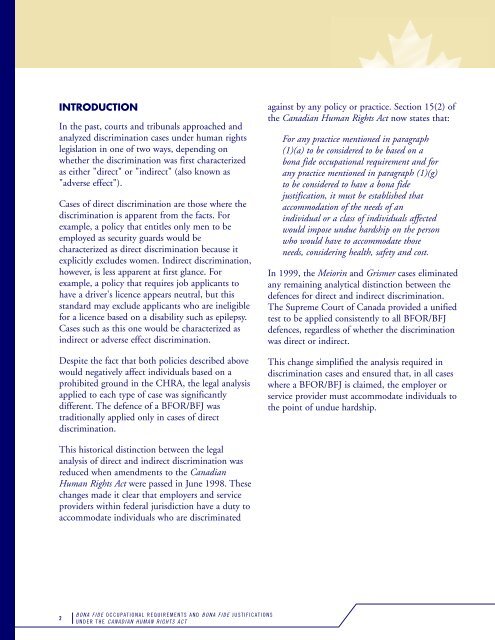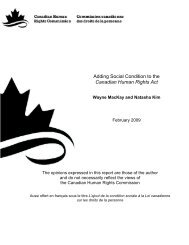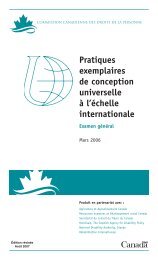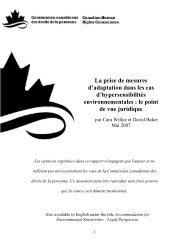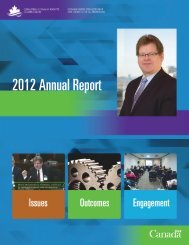Bona Fide Occupational Requirements
Bona Fide Occupational Requirements
Bona Fide Occupational Requirements
- No tags were found...
You also want an ePaper? Increase the reach of your titles
YUMPU automatically turns print PDFs into web optimized ePapers that Google loves.
INTRODUCTIONIn the past, courts and tribunals approached andanalyzed discrimination cases under human rightslegislation in one of two ways, depending onwhether the discrimination was first characterizedas either "direct" or "indirect" (also known as"adverse effect").Cases of direct discrimination are those where thediscrimination is apparent from the facts. Forexample, a policy that entitles only men to beemployed as security guards would becharacterized as direct discrimination because itexplicitly excludes women. Indirect discrimination,however, is less apparent at first glance. Forexample, a policy that requires job applicants tohave a driver's licence appears neutral, but thisstandard may exclude applicants who are ineligiblefor a licence based on a disability such as epilepsy.Cases such as this one would be characterized asindirect or adverse effect discrimination.Despite the fact that both policies described abovewould negatively affect individuals based on aprohibited ground in the CHRA, the legal analysisapplied to each type of case was significantlydifferent. The defence of a BFOR/BFJ wastraditionally applied only in cases of directdiscrimination.against by any policy or practice. Section 15(2) ofthe Canadian Human Rights Act now states that:For any practice mentioned in paragraph(1)(a) to be considered to be based on abona fide occupational requirement and forany practice mentioned in paragraph (1)(g)to be considered to have a bona fidejustification, it must be established thataccommodation of the needs of anindividual or a class of individuals affectedwould impose undue hardship on the personwho would have to accommodate thoseneeds, considering health, safety and cost.In 1999, the Meiorin and Grismer cases eliminatedany remaining analytical distinction between thedefences for direct and indirect discrimination.The Supreme Court of Canada provided a unifiedtest to be applied consistently to all BFOR/BFJdefences, regardless of whether the discriminationwas direct or indirect.This change simplified the analysis required indiscrimination cases and ensured that, in all caseswhere a BFOR/BFJ is claimed, the employer orservice provider must accommodate individuals tothe point of undue hardship.This historical distinction between the legalanalysis of direct and indirect discrimination wasreduced when amendments to the CanadianHuman Rights Act were passed in June 1998. Thesechanges made it clear that employers and serviceproviders within federal jurisdiction have a duty toaccommodate individuals who are discriminated2 |BONA FIDE OCCUPATIONAL REQUIREMENTS AND BONA FIDE JUSTIFICATIONSUNDER THE CANADIAN HUMAN RIGHTS ACT


